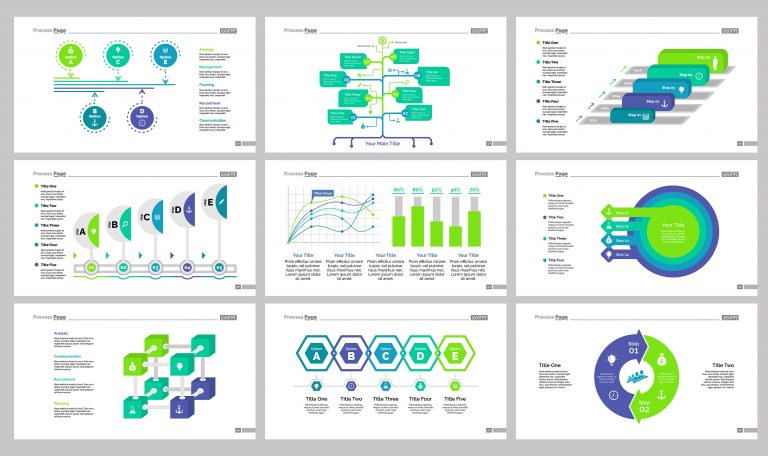If you run a GMP or GPP facility, we are likely to run into a slew of issues on a regular basis. However, we spend a significant amount of time resolving the problem but do not investigate its root cause. Determining the root cause of a problem aids in preventing its recurrence. A well-executed root cause analysis (RCA) not only helps to prevent the occurrence of the situation in question but also helps to reduce the likelihood of future occurrences of similar issues.
For each incident or deviation in a regulatory facility, corrective and preventive action (CAPA) must be determined and implemented. Regulatory bodies may request CAPAs during routine inspections or in exceptional cases, such as recalls. Understanding the root causes is essential for developing corrective and preventive measures (CAPA).
As a result, determining the correct root cause of the problem is critical to effectively address the problem. A problem frequently has several causes coming from various levels. This implies that some causes impact other causes, which then result in the apparent issue. A cause may fall under one of the following categories:
The RCA should be carried out systematically, which requires the use of specific tools. A thorough RCA performed with the right tools will enable you to pinpoint the root of the issue, develop solutions to get rid of it, and stop it from happening again. And there is a good chance that more relevant problems can be addressed if the root cause is done correctly. To perform RCA successfully, RCA should be done by taking the following steps:
Although root-cause analysis (RCA) is a crucial step in problem solutions, errors can be made that make the investigation unproductive. We’ll talk about eleven typical errors in this blog article that can seriously harm your RCA process.
Common Mistakes Leading to failure of Root Cause Analysis (RCA):
Lack of preparation is one of the most common reasons why Investigation and Root Cause Analysis (RCA) attempts fail. Many people try to rush through the process without taking the time to fully understand the problem. This often leads to a superficial analysis and an incomplete understanding of the issue. If you want your Investigation and RCA to be successful, it’s important to take the time to properly prepare. Make sure you have a clear understanding of the issue before you begin your analysis. This will help ensure that you identify the true root cause of the problem and develop an effective solution.
It is critical that participants involved in the investigation should have knowledge of the RCA tools and techniques used in the process. Because not all RCA tools are applicable for every problem. Selection of the correct tool is an important decision and should be done vigilantly. Most failures occur when an incorrect set of tools are selected to perform the RCA, leading to lengthy procedures and unsatisfactory outcomes. On the contrary, an appropriate tool selection will lead to correct RCA and effective elimination of the problem.
For your convenience, I am providing a table of tools with their advantages and pitfalls.

It’s human nature to want to solve problems quickly. When something goes wrong, we often jump to conclusions and make assumptions about what caused the issue. However, this can often lead to inaccurate solutions that don’t address the root cause of the problem. Investigation and root cause analysis are essential to finding an accurate solution. By taking the time to gather all the facts, we can avoid making assumptions that might lead us down the wrong path. Inaccurate solutions can waste time and resources, so it’s important to take a methodical approach to problem solving. By taking a little extra time up front, we can save ourselves a lot of trouble in the long run.
In an investigation, it’s important to consider all the evidence before coming to any conclusions. However, we often fall prey to confirmation bias, which is our tendency to seek out information that confirms our preconceived notions and ignore information that contradicts them. This can lead us astray during an RCA, causing us to focus on evidence that supports our initial hypothesis while ignoring any contradictory evidence. As a result, we may come to an incorrect conclusion about the root cause of the problem. To avoid this, it’s important to be aware of confirmation bias and make sure to consider all the evidence before drawing any conclusions.
A cognitive bias called selective perception might emerge during an investigation, particularly a root cause analysis. It occurs when we selectively concentrate on some information while dismissing other parts of it. Inaccurate conclusions regarding the issue may result from this. Be mindful of your personal biases and try to maintain an open mind while you weigh all the available facts. Don’t let your personal biases cloud your judgement of the situation; instead, attempt to consider it from a variety of angles. By being aware of this prejudice, you can take precautions to avoid it and guarantee the accuracy of your study.
One of the most common mistakes in problem solving is premature closure. This is when we reach a conclusion before fully investigating all the possible causes of the problem. The result can be an incorrect solution, or even worse, missing an opportunity to identify additional root causes. When solving a problem, it’s important to thoroughly investigate all potential causes before declaring the problem solved. Root cause analysis is a process that can help you to do this by systematically exploring all the factors that could contribute to the problem. By taking the time to do a thorough investigation, you can avoid making premature decisions that could lead to costly mistakes.
It can be easy to identify a problem and then sweep it under the rug rather than taking action to address the root cause. However, this does nothing to prevent the problem from occurring again in the future. That’s why it’s important to develop a plan of action once you’ve identified the root cause of a problem. This plan should be clear and concise, addressing the specific issue at hand. By taking action to address the root cause, you can help prevent the problem from recurring in the future. And if the problem does arise again, you’ll be prepared to take quick and effective action. Tools from Annex 5 will be helpful for this.
Failure to learn from our failures is one of the most frequent errors in any problem-solving process. This may result in continually making the same mistakes and never moving forward. To prevent this, be sure to reflect on what went well and what could be improved after each RCA.
Sometimes our emotions can cloud our judgement and interfere with our ability to accurately assess a situation during an RCA. This can lead us to make irrational decisions based on faulty logic, which can result in ineffective solutions or even new problems down the road. Keep your emotions in check and use sound reasoning when assessing the problem situation.
RCA is an analytical process that requires careful consideration and planning before you jump into action or make decisions. There are many different methods to choose from but false dichotomies occur when we view situations as black-and white without any room left over on the spectrum, leading us astray during our assessment by causing blindness towards potential causes/solutions because they don’t fit neatly anywhere within 1 category this type of thinking can also affect how fast things move forward in relation with one another; try not get stuck right away at rigid thought processes until all possibilities have been exhausted!
Groupthink is a phenomenon that occurs when a group makes decisions based on faulty reasoning or pressure from other members of the group, often leading to poor decisions or outright disasters. It’s important to avoid groupthink during RCAs by ensuring everyone has an opportunity to share their ideas and there’s no pressure to conform to anyone else’s views.
Dogma is a stubborn belief system that refuses to understand new information or change its stance even considering fresh evidence. It’s one thing to believe passionately in something, but it’s another t o hold onto those beliefs irrationally and refuse t o listen t o anyone who disagrees with you. During RCAs, it’s important to be open-minded and listen t o everyone ‘s ideas, regardless of how outlandish they may seem at first
MFLRC is a one-stop shop for all of your quality assurance and compliance needs. Our team has years of experience in the cannabis industry and are expert in all facets. We offer a variety of services that will save you time and money. Let us take the burden off your shoulders so you can focus on what’s important – growing your business.
Some of our services include:
Contact us Now!
1. Fagerhaug, Tom; Andersen, Bjørn. Root Cause Analysis: Simplified Tools and Techniques, Second Edition. ASQ Quality Press. Kindle Edition.
Mussarat Fatima, President, and owner of MF Cannabis License and Regulatory Consultants has more than twenty years of experience in Quality Assurance, Quality Control, and Regulatory Affairs within the pharmaceutical, Food and Cannabis industries. She has a Master’s Degree in Food Sciences and Biochemistry; in addition to this, she also has a diploma in pharmaceutical Quality Assurance, Regulatory Affairs, and Quality Control. Also, she has completed several certifications specifically in Cannabis Quality Assurance, Regulatory Affairs, and Facility management from recognized institutes in Canada.

Written By: Mussarat Fatima
President at MF License & Regulatory Consultants
Website: https://mflrc.com/
Contact: info@mflrc.com